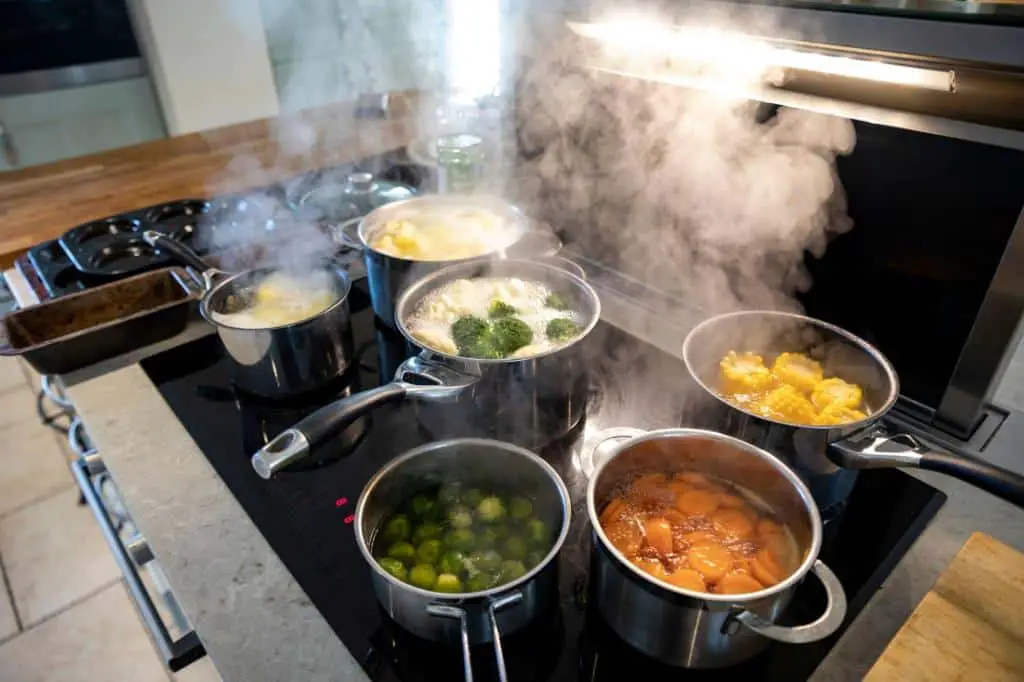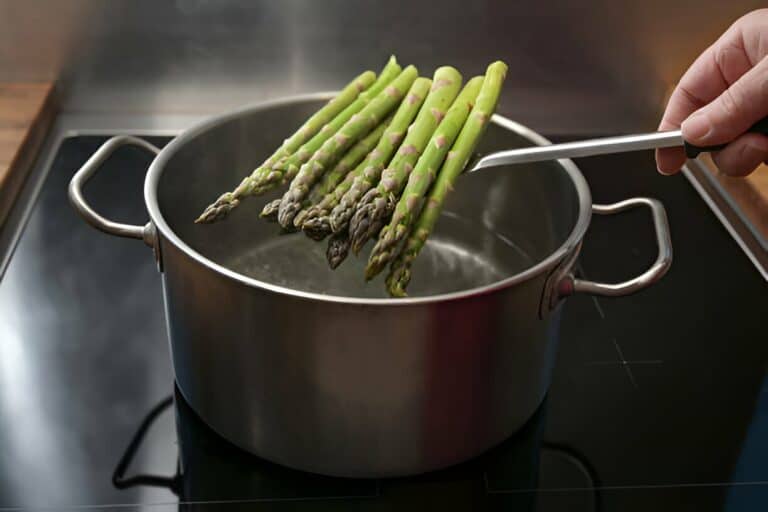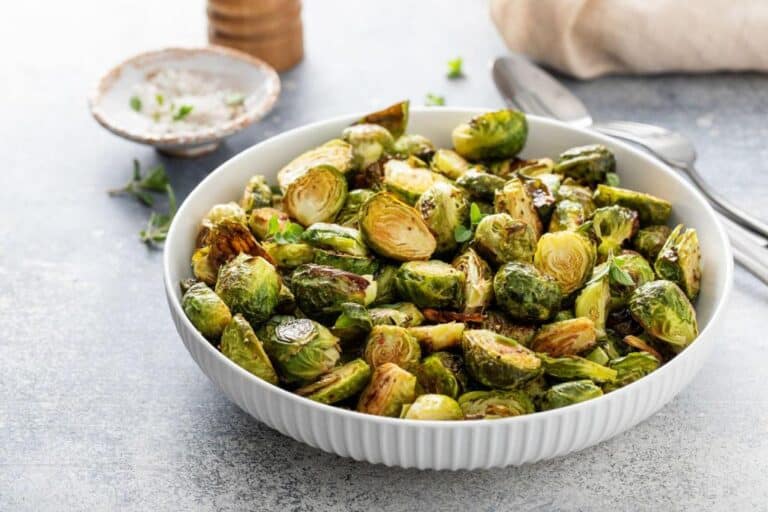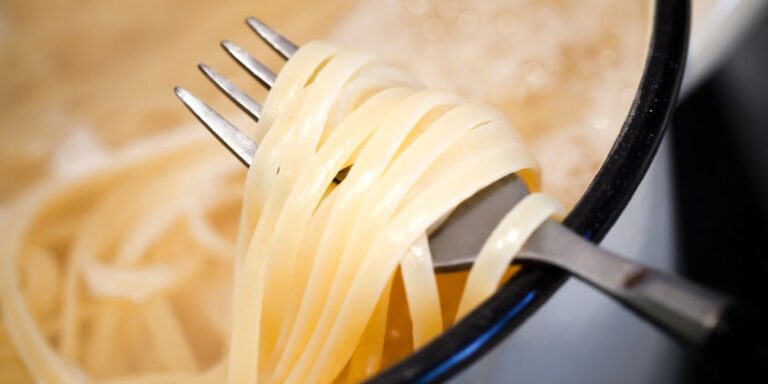What Is the Healthiest Way To Eat Brussels Sprouts? Cooking for Wellness

Welcome to a flavorful journey of wellness and nutrition! If you’re curious about the healthiest way to eat Brussels sprouts, you’ve come to the right place. These tiny, vibrant vegetables hold a wealth of goodness that can transform your meals into delicious and nourishing experiences.
In this article, we’ll dive into the world of Brussels sprouts and explore the cooking methods that preserve their nutritional value while tantalizing your taste buds.
Brussels sprouts have emerged as a culinary star, packed with vitamins, minerals, and antioxidants that promote overall well-being. But how can we unlock their full potential and make them a delightful addition to our wellness-focused diet?
We’ll unravel the secrets behind steaming, roasting, and sautéing these miniature cabbages, ensuring you get the most out of every bite. From crispy chips to vibrant salads and comforting soups, we’ll guide you through a range of creative and mouthwatering recipes that will have you savoring Brussels sprouts like never before.
So, let’s embark on this flavorful journey together and discover the healthiest way to eat Brussels sprouts for a truly fulfilling and wellness-enhancing culinary experience.
Overview of Brussels Sprouts
Brussels sprouts, part of the Brassica family, are small, cabbage-like vegetables that have been cultivated for centuries. Originating from the Mediterranean region, these nutrient-rich gems have found their way into kitchens worldwide. With their distinctive flavor and numerous health benefits, Brussels sprouts have become a favorite among health-conscious individuals.
Nutritionally, Brussels sprouts are a powerhouse. They are low in calories but high in fiber, vitamins, and minerals. These miniature cabbages are an excellent source of vitamin C, vitamin K, folate, and antioxidants, all of which play a vital role in supporting our overall health.
There are different varieties of Brussels sprouts, each with its own unique characteristics. Some varieties are sweeter and milder in taste, while others have a more pronounced earthy flavor. Exploring these variations allows you to find the perfect fit for your taste preferences and culinary creations.
What Is the Healthiest Way To Eat Brussels Sprouts?
When it comes to enjoying the health benefits of Brussels sprouts, finding the healthiest way to prepare and consume them is key. These nutritious mini-cabbages are packed with vitamins, minerals, and fiber, making them a valuable addition to a well-rounded diet. To maximize their nutritional value and reap the benefits they offer, let’s explore the healthiest ways to eat Brussels sprouts.
Steaming Brussels sprouts is considered one of the healthiest cooking methods. Steaming preserves the nutrients and maintains the vibrant color and crispness of the sprouts. By gently cooking them in steam, you can retain their natural flavors and beneficial compounds.
Another healthy option is roasting Brussels sprouts. Roasting enhances their natural sweetness and creates a delightful caramelization, adding depth and complexity to their taste. To keep it healthy, use minimal oil and avoid excessive amounts of added fat.
The cooking method you choose can significantly impact the nutritional value and taste of Brussels sprouts. Here’s a comparative analysis of various cooking methods to help you make the healthiest choice:
Table: Benefits and Drawback of Brussels Sprouts’ Cooking Method
| Cooking Method | Benefits | Drawbacks |
| Steaming | Preserves nutrients | Can lead to mushy texture |
| Boiling | Retains nutrients | May result in loss of flavor |
| Roasting | Enhances natural sweetness and caramelization | Some nutrient loss may occur |
| Sautéing | Quick and flavorful cooking method | Requires added fats or oils |
| Grilling | Adds smoky flavor and charred texture | Requires careful monitoring to prevent burning |
To retain the maximum nutrients while cooking Brussels sprouts, consider steaming or roasting them. Steaming helps preserve the water-soluble vitamins, while roasting brings out their natural sweetness and adds a delightful caramelized flavor.
For even better results, experiment with combining cooking methods. For instance, you can steam Brussels sprouts briefly before roasting them to achieve a balance of tenderness and a crispy exterior.
Cooking for Wellness

Cooking for wellness goes beyond just nutrition; it’s about nourishing your body and promoting overall well-being. Consider the following aspects:
- The connection between nutrition and well-being: A balanced diet, including Brussels sprouts, contributes to improved energy levels, better digestion, and enhanced mood.
- Health benefits for specific conditions: Brussels sprouts offer unique benefits for specific conditions, such as supporting heart health, managing blood sugar levels, and promoting healthy digestion.
- Balanced diet and personalized plans: Incorporate Brussels sprouts into a balanced diet that includes a variety of fruits, vegetables, whole grains, and lean proteins. Customize your dietary plan based on your individual needs and consult with a healthcare professional or registered dietitian if necessary.
Choosing and Selecting Brussels Sprouts
To ensure the healthiest eating experience, it’s crucial to select fresh and high-quality Brussels sprouts. Here are some tips to help you choose the best ones:
- Look for Brussels sprouts that have vibrant green color and tightly packed leaves. Avoid those with yellowing or wilted leaves.
- The sprouts should feel firm and dense to the touch, indicating freshness.
- If possible, opt for organic Brussels sprouts to minimize exposure to pesticides and chemicals.
- Locally sourced Brussels sprouts are not only environmentally friendly but also often fresher due to reduced transportation time.
- Seasonality plays a role in the availability of Brussels sprouts. They are typically at their peak from late fall to early spring, so plan your purchases accordingly for optimal flavor and freshness.
Preparing Brussels Sprouts for Cooking
Before diving into cooking, it’s important to properly prepare Brussels sprouts. Follow these steps for the best results:
- Cleaning and Trimming: Rinse the Brussels sprouts under cold water to remove any dirt or debris. Trim the tough ends of the stems and remove any discolored or damaged outer leaves.
- Ensuring Proper Hygiene: As with any vegetable, maintaining proper hygiene is crucial. Wash your hands thoroughly before handling Brussels sprouts, and clean your cutting board and knife to prevent cross-contamination.
- Storage Methods: To preserve the freshness of Brussels sprouts, store them unwashed in a perforated bag in the refrigerator. This helps maintain their moisture balance and prevents them from becoming too damp or dry.
- Blanching or Parboiling: While not mandatory, blanching or parboiling Brussels sprouts before cooking can help enhance their color and texture and reduce bitterness. Simply plunge them into boiling water for a few minutes, then transfer them to an ice bath to halt the cooking process.
Read: Do You Wash Brussels Sprouts Before or After Cutting?
Steaming Brussels Sprouts
Steaming Brussels sprouts is one of the healthiest ways to prepare them while preserving their nutrients. Steaming helps retain the vibrant green color and crisp texture of the sprouts. Here’s a simple, step-by-step guide to steaming Brussels sprouts:
- Start by trimming the ends and removing any discolored outer leaves.
- Rinse the sprouts under cool water to remove any dirt or debris.
- Fill a pot with a few inches of water and bring it to a boil.
- Place the Brussels sprouts in a steamer basket or colander and put it over the boiling water.
- Cover the pot with a lid and steam the sprouts for about 5-7 minutes until they become tender but still slightly firm.
- Remove the sprouts from the steamer and season them with your favorite herbs, spices, or a drizzle of olive oil.
Roasting Brussels Sprouts
Roasting Brussels sprouts is another delicious and healthy cooking method that brings out their natural sweetness. Roasting creates a caramelized exterior while keeping the insides tender. Follow these steps to roast Brussels sprouts to perfection:
- Preheat your oven to 400°F (200°C).
- Trim the ends and cut the sprouts in half.
- Toss the sprouts in a bowl with olive oil, salt, and pepper, ensuring they are evenly coated.
- Spread the sprouts in a single layer on a baking sheet.
- Roast in the preheated oven for approximately 20-25 minutes, stirring halfway through to ensure even browning.
- Once the sprouts are crispy and golden brown, remove them from the oven and season with additional herbs or spices if desired.
Sauteing Brussels Sprouts
Sauteing Brussels sprouts is a quick and flavorful method that requires minimal effort. This technique adds a slightly caramelized taste to the sprouts while maintaining their vibrant color. Follow these steps to sauté Brussels sprouts:
- Heat a skillet or frying pan over medium-high heat.
- Trim the ends and cut the sprouts into halves or quarters.
- Add a small amount of olive oil or butter to the heated pan.
- Once the oil is hot, add the Brussels sprouts to the pan.
- Saute the sprouts for approximately 8-10 minutes, stirring occasionally, until they become tender and slightly browned.
- Season with salt, pepper, and any other desired herbs or spices.
Flavorful Seasonings and Pairings
While Brussels sprouts have their own unique taste, you can elevate their flavor profile with the right seasonings and pairings. Here are some ideas to tantalize your taste buds:
- Herbs and Spices: Enhance Brussels sprouts with a sprinkle of herbs like thyme, rosemary, or dill. Spices like garlic powder, paprika, or cumin can add depth and complexity to your dishes.
- Condiments and Sauces: Drizzle Brussels sprouts with balsamic glaze, honey mustard, or tahini sauce for a tangy and creamy touch. Experiment with different condiments to find your perfect combination.
- Complementary Ingredients: Incorporate complementary ingredients to create a harmonious dish. Consider adding roasted nuts, dried cranberries, or crumbled feta cheese for texture and flavor contrast.
- Creative Recipes: Don’t limit yourself to basic preparations. Get creative with Brussels sprouts by roasting them with a touch of maple syrup and crispy bacon, or tossing them in a stir-fry with colorful vegetables and a flavorful sauce. The possibilities are endless!
Tips for Sustainable Cooking and Waste Reduction
Sustainable cooking practices not only benefit the environment but also contribute to your overall well-being. Consider the following tips to reduce waste and support sustainability when cooking Brussels sprouts:
- Reducing food waste: Plan your meals and purchase Brussels sprouts in quantities that you can use without excessive leftovers. Store them properly to maintain freshness and avoid spoilage.
- Creative uses for Brussels sprout leaves and stalks: Don’t discard the leaves and stalks of Brussels sprouts. They can be repurposed in creative ways. Use the leaves in salads or sauté them as a nutritious side dish. The stalks can be added to vegetable broths or used as a base for stir-fries.
- Composting and recycling kitchen scraps: If you have unavoidable food waste, consider composting it to create nutrient-rich soil for your garden. Additionally, recycle packaging materials and other kitchen waste according to your local recycling guidelines.
- Sustainable sourcing: Support local farmers and choose organic or sustainably grown Brussels sprouts whenever possible. This helps reduce the environmental impact of food production and supports the local economy.
By incorporating these sustainable cooking practices, you can not only enjoy the health benefits of Brussels sprouts but also contribute to a more environmentally friendly and responsible food system.
Conclusion
Brussels sprouts offer an abundance of health benefits and can be enjoyed in various delicious ways. Whether you choose to steam, roast, saute, or incorporate them into salads, stir-fries, chips, soups, or skewers, Brussels sprouts are a versatile vegetable that can enhance your wellness-focused diet. Experiment with different cooking methods and flavor combinations to find your favorite way to enjoy this nutritious and tasty vegetable. Embrace the healthiest way to eat Brussels sprouts and embark on a culinary journey that nourishes both your body and taste buds.
Remember, cooking for wellness is all about exploring new ingredients, preparing them mindfully, and savoring the flavors that nature provides. So, go ahead and make Brussels sprouts a staple in your kitchen, and reap the benefits of this nutrient-packed powerhouse vegetable.
FAQs
Can Brussels sprouts help with weight loss?
Brussels sprouts can be a valuable addition to a weight loss plan. They are low in calories but high in fiber, which can help you feel full and satisfied. The fiber also aids in digestion and promotes healthy gut function. Additionally, Brussels sprouts are nutrient-dense, providing essential vitamins and minerals while being relatively low in fat. Incorporating Brussels sprouts into your meals can support your weight loss goals while adding delicious and nutritious variety to your diet.
Are there any potential health risks or allergies associated with Brussels sprouts?
While Brussels sprouts are generally safe to consume, some individuals may experience digestive discomfort due to their high fiber content. Additionally, individuals with a known allergy to cruciferous vegetables, such as broccoli or cabbage, may also be allergic to Brussels sprouts. If you have any concerns or a history of allergies, it’s best to consult with a healthcare professional before adding Brussels sprouts to your diet.
Can I freeze cooked Brussels sprouts for later use?
Yes, you can freeze cooked Brussels sprouts for future use. To freeze them, allow the cooked sprouts to cool completely, then transfer them to airtight freezer-safe containers or freezer bags. It’s advisable to blanch the Brussels sprouts briefly before freezing to help maintain their texture and color. When you’re ready to use them, simply thaw the frozen sprouts in the refrigerator overnight and incorporate them into your favorite recipes.
Can I grow Brussels sprouts in my home garden?
Yes, you can grow Brussels sprouts in your home garden, provided you have the right conditions. Brussels sprouts thrive in cooler temperatures and require a long growing season. Start by planting seedlings in early spring or late summer, ensuring they have sufficient space to grow. Brussels sprouts prefer rich, well-draining soil and benefit from regular watering and adequate sunlight. With proper care and attention, you can enjoy homegrown Brussels sprouts and savor the satisfaction of harvesting them from your own garden.
How many calories are in a serving of Brussels sprouts?
On average, a serving of Brussels sprouts (about 1 cup or 156 grams) contains approximately 56 calories. The calorie content may vary slightly depending on the specific preparation method and any additional ingredients used. However, Brussels sprouts are a low-calorie vegetable that offers a range of essential nutrients, making them a nutritious choice for those watching their calorie intake.
What are some common flavor pairings for Brussels sprouts?
Brussels sprouts pair well with a variety of flavors. Some common combinations include bacon or pancetta, garlic, lemon or balsamic vinegar, Parmesan cheese, nuts such as almonds or walnuts, and herbs like thyme or rosemary. These flavor pairings add depth and enhance the natural earthiness of Brussels sprouts, creating a delightful balance of tastes in your dishes.
Can Brussels sprouts be included in a low-carb or keto diet?
Yes, Brussels sprouts can be included in a low-carb or keto diet. They are relatively low in carbohydrates and high in fiber, making them a suitable choice for those following these diets. Brussels sprouts provide essential vitamins and minerals while adding variety and texture to low-carb meals. However, it’s essential to track your overall carbohydrate intake and adjust portion sizes to fit within your specific dietary requirements.
Are Brussels sprouts suitable for individuals with diabetes?
Brussels sprouts can be a beneficial addition to the diet of individuals with diabetes. They have a low glycemic index, meaning they have a minimal impact on blood sugar levels. The high fiber content in Brussels sprouts also aids in blood sugar management and can help regulate glucose absorption. However, it’s important to monitor portion sizes and consider individual carbohydrate intake and overall meal planning. Consulting with a healthcare professional or registered dietitian can provide personalized guidance on incorporating Brussels sprouts into a diabetes-friendly diet.






